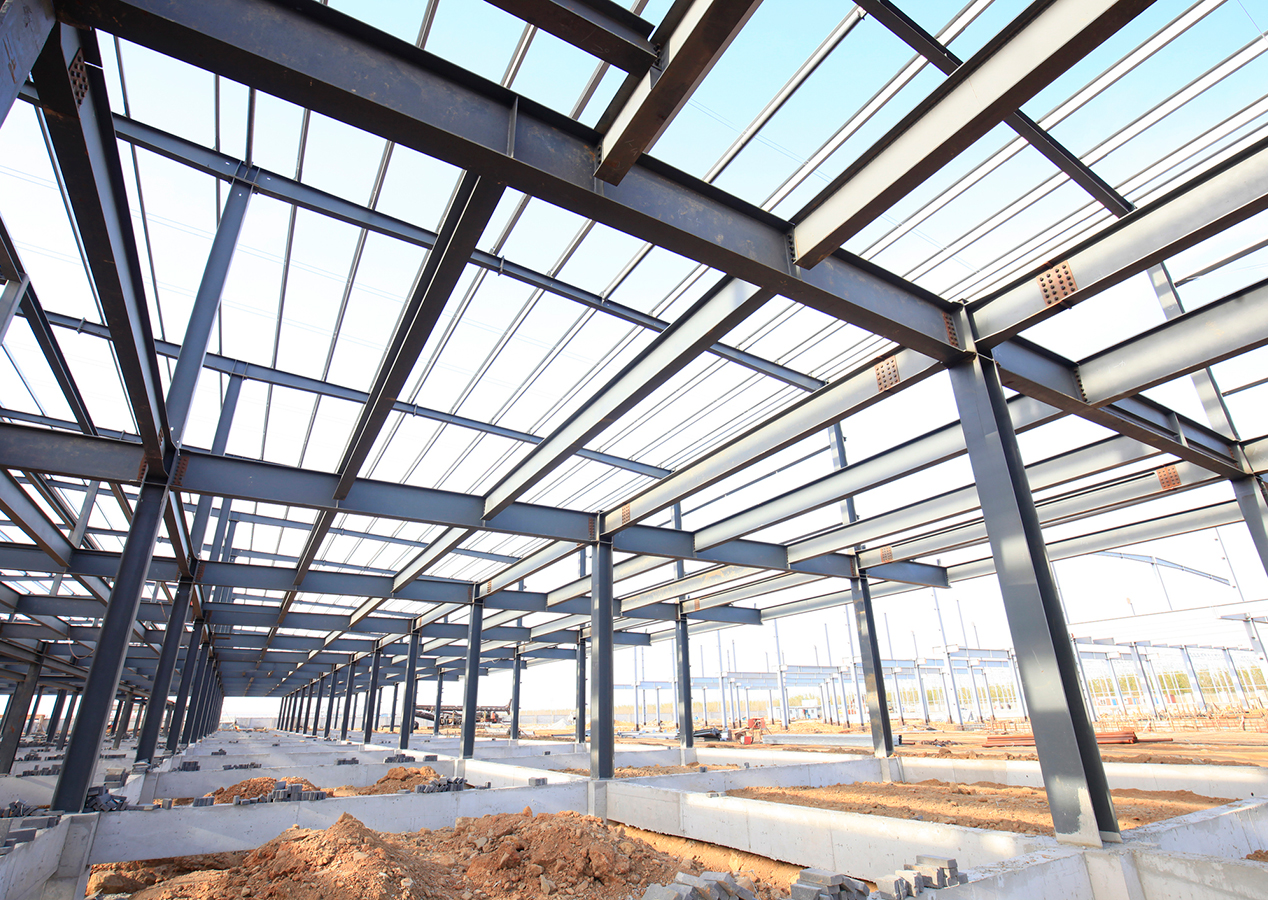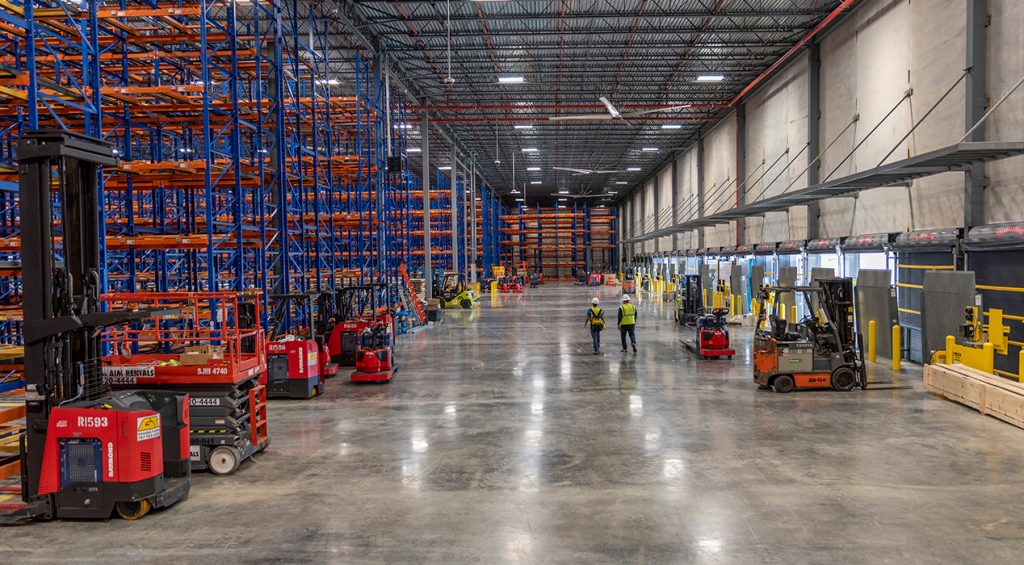Warehouse construction grows on robust
e-commerce and rising consumer demand

In our post-pandemic world, the ever-increasing popularity of products and services sold via e-commerce platforms has propelled the warehousing industry to new heights, prompting design and construction of larger, stronger and more comfortable facilities.
Demand for Warehouse Space Surges
Warehouse space in the U.S. is getting harder to find, even as rents continue to go up. Available industrial space—which comprises land and buildings that accommodate industrial activities such as production, manufacturing, warehousing, assembly, research, storage and distribution—dropped to 4.2% to a 27-year low during the first three months of 2022, according to a U.S. Industrial Market Update released in May by global commercial real estate firm Savills.
Demand is being driven by companies taking on larger inventory positions to avoid the effects of supply chain disruptions such as those caused by the Covid-19 pandemic. In addition, e-commerce platforms need incremental inventories positioned closer to the end consumer in order to meet tight delivery schedules.
Warehouse space also remains constrained by construction or development delays caused by pandemic-related labor shortages, according to a report by Chicago-based real estate firm JLL. Construction timelines are stretched to as long as two years, up from a typical nine months, JLL reported.
The tightest markets are southern California and northern New Jersey with 1.6% and 2.5% vacancy, respectively. These markets also saw the highest year-over-year rent increases: almost 19% and 16%. Asking rents for industrial real estate nationwide rose year-over-year by almost 9% during the first quarter, continuing a trend of rising costs in response to limited availability, according to Savills’ report.
In response to rising demand, developers have been adding industrial space. About 750 million square feet is currently under construction, up from 507 million a year ago, Savills reported. Many industrial projects are now pre-leased before even being built.
Growth in Warehouse Construction
Pushed by a thriving e-commerce industry and increased demand for warehouse space, warehouse construction is forecast to reach $53 billion this year, up 1400% since 2010 and representing 36% of the entire U.S. commercial construction sector, according to “The Connected Warehouse,” a study by Dodge Data & Analytics.
New Millennium Warehouses
The Digital Revolution and Information Age have dramatically altered the modern warehouse. Today’s warehouses are deploying sophisticated technologies and operating round-the-clock to optimize performance and respond to ever-changing demands.

To accommodate higher volumes and cater to new business models, these warehouses require more energy, equipment, security and safety management to operate and call for new designs and construction specifications. Here are six ways in which new millennium warehouses differ from last century warehouses.
1. They Are Larger
Warehouse size has ballooned as these facilities have morphed from simple shipping and receiving facilities to high-tech, automated processing centers. The 1-million-square-foot warehouse is becoming a standard, with some facilities adding mezzanine levels that can push some warehouses to the 3 million-square-foot mark and beyond.
2. They Are in Urban Areas
E-commerce retailers need smaller, multi-story warehouses that can process last-mile orders. As a result, more warehouses are popping up in densely populated metro areas. Unlike suburban and rural distribution centers, urban warehouses typically are remodels of older facilities.
3. Sites Are Bigger
Increased need for larger parking lots, loading and unloading areas, truck maintenance garages, fuel islands and other satellite facilities calls for bigger sites. These additional facilities are taking up a greater portion of the site than in the past.
4. They Are Stronger
Super-sized warehouse facilities need strong envelopes (floors, walls and roofs) and infrastructure to hold and run their massive machines, racks and mezzanines. Reinforced slab, stronger roofs and additional insulation are now commonly used in warehouse construction.
5. They Are More Comfortable
In a historically tight labor market, comfortable, well-equipped distribution centers help attract and retain workers to pack, sort and ship packages. Smart temperature and lighting controls, full kitchens and dining areas, lounges and entertainment spaces, ample parking areas, and landscaped outdoor spaces are some of the amenities that employees have come to expect.
6. They Are Built Quickly
Construction of complex distribution centers requires precise timelines so that the critical parts and functions of the facilities are delivered first. This means construction turnaround times of as fast as 12 months for 1 million square feet or more. Incorporating warehouse technology adds another layer of complexity in the construction process.
Planning a Warehouse?
Warehouse construction involves a myriad of details that must be effectively planned and executed to reach a favorable outcome. Partnering with a reputable contractor that is actively engaged throughout the design and beginning stages of a warehouse project is key. At CIC Construction Group, we have the knowledge, skill, and experience to achieve successful warehouse developments for our clients regardless of complexity or scale. Contact us to discuss your project.
